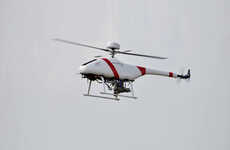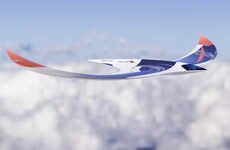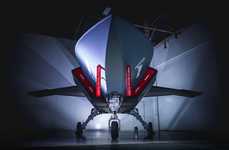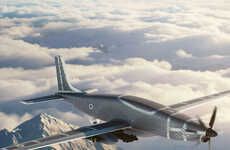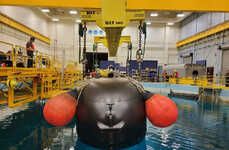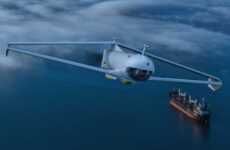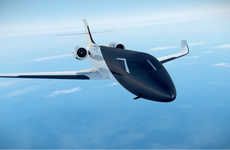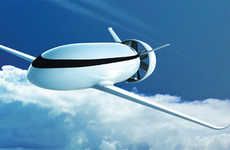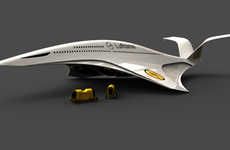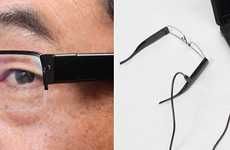
The Boeing SolarEagle UAV Aims to Stay in the Air for Five Years
Michael Hines — September 19, 2010 — Autos
If you think a 16-hour flight is bad, try a five-year flight on the Boeing SolarEagle. The Boeing SolarEagle is a project between DARPA and Boeing to build a UAV (unmanned aerial vehicle) that can stay airborne at an altitude of 60,000 feet for five years!
The Boeing SolarEagle would run on solar power, which should, in theory, be able to keep it up and running for as long as need be. The solar UAV would be used as a mobile communication and reconnaissance satellite. The Boeing SolarEagle is set to be ready for flight by 2014.
The Boeing SolarEagle would run on solar power, which should, in theory, be able to keep it up and running for as long as need be. The solar UAV would be used as a mobile communication and reconnaissance satellite. The Boeing SolarEagle is set to be ready for flight by 2014.
Trend Themes
1. Long-duration Flight - Opportunity for developing technologies that enable aircraft to stay airborne for extended periods of time, disrupting the aviation industry.
2. Solar Power - Innovation in solar energy applications for powering aircraft, potentially revolutionizing the renewable energy and aerospace sectors.
3. Unmanned Aerial Vehicles (uavs) - Advancements in UAV technology for various applications, presenting opportunities for automation and remote operations in industries such as defense and surveillance.
Industry Implications
1. Aviation - Developing long-duration flight capabilities can lead to new opportunities in air transportation and cargo logistics.
2. Renewable Energy - Integrating solar power into aircraft technology can drive advancements in renewable energy solutions for transportation and other applications.
3. Defense and Surveillance - Improved UAV capabilities can disrupt defense and surveillance industries by enhancing remote monitoring and data collection.
4.8
Score
Popularity
Activity
Freshness


